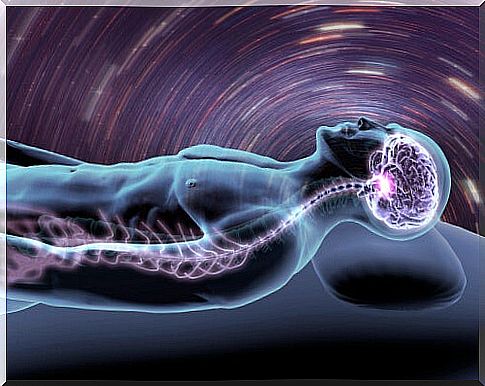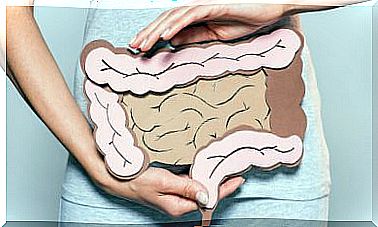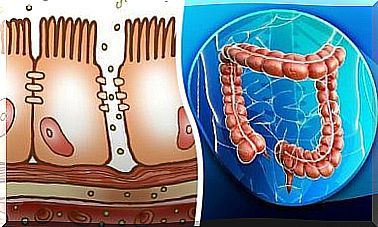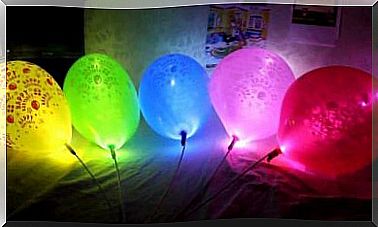What Is The Wake-sleep Cycle?
We speak of the wake-sleep cycle to refer to the alternation that our body presents between the moments in which we are awake and those in which we sleep. The waking part of the cycle is what happens while we are not sleeping, and vice versa.
The nervous system is in charge of regulating the wake-sleep cycle. There are specialized neurons to coordinate neuronal function and tissues that act as a biological clock.
This chronometer that we have some living beings inside, and that stipulates cycles for vital functions, is studied through chronobiology. And the name for these cycles is circadians .
Humans have three types of circadian cycles:
- Pure: they are those that are completed in approximately 24 hours, such as the wake-sleep cycle.
- Infradian: they are those that last more than a day, like a woman’s menstrual cycle.
- Ultradians: completed in less than a day.
How is wakefulness different from sleep?
The wake-sleep cycle combines two moments in life: being awake and sleeping. Both stages are vital and very different from each other. Waking implies a state of consciousness, we have knowledge of what is happening and we use the senses to communicate with the environment that surrounds us. We can think while waking and act accordingly.
Staying awake is a task of the nervous system, more precisely of the ascending reticular system, which is a set of specialized neurons. This tissue communicates with the thalamus and with the cerebral cortex.
One of the neurotransmitters most used in wakefulness is norepinephrine, unlike sleep that uses melatonin. This substance regulates the attention we pay and the drive to perform activities.
Along with norepinephrine, serotonin is important, which performs relevant functions in the cerebral cortex, especially in the area of neurons that regulate vision.

Melatonin in the wake-sleep cycle
As we said, melatonin is a key hormone in the wake-sleep cycle, since it opposes norepinephrine to introduce us to sleep. It is a substance that is produced cyclically, respecting the circadian rhythm.
Melatonin is produced in the pineal gland when it detects darkness. On the contrary, sunlight or artificial light send orders to the gland to stop its production.
During a night of relative normality, where the individual rests 8 hours, it will be at the fourth hour of sleep when the maximum production of melatonin is reached. In this way, the hormone supports rest.
Exposure to light stops the effect of melatonin, and therefore it is common for our wake-sleep cycle to be altered if we do activities with bright light before bedtime. The use of the mobile, for example, is one of the most characteristic habits that delays the production of melatonin.
The substance can also be consumed artificially, which is why it is marketed in capsules:
- Medium effect, capable of sustaining sleep for no more than 4 hours
- Prolonged release, to simulate the natural effect and complete 8 hours of sleep
Sleep-wake cycle disorders
The wake-sleep cycle can be disrupted. Disorders derived from a problem in the biological clock are diseases of the circadian rhythm, and there are some cataloged by medicine, such as the following:
- Phase delay: this happens in patients who fall asleep late, at dawn, and then do not wake up early in the morning. It can happen to anyone, but it is a disorder when it lasts for more than a month.
- Phase advancement: unlike the previous one, the individual has an unstoppable sleep since the afternoon, which forces him to fall asleep. However, in the middle of the night he wakes up and can no longer fall asleep.
- Irregular rhythm – here it is difficult to determine how the body behaves. The irregularity is that there is no parameter that the biological clock follows to mark the stages. One day there is phase delay and another day there is phase advancement. It is classified as a disorder when it persists for 3 months.

- Jet lag : it is the traveler’s disease, known to be suffered by people who take a plane and cross different time zones in a few hours.
- Shift worker: it is the common disorder of those who have jobs with rotating night shifts, such as night watchmen or nurses.
- Hypernictameral: in this case, the circadian rhythm of wakefulness-sleep lasts more than 24 hours, and each time it is prolonged. In practice, the patient usually adds time to sleep each day, up to almost a full day’s sleep.
Rest well to stay awake better
The wake-sleep cycle is the way it is for our body to function properly. A good rest is key to a healthy waking period. Conversely, being awake healthy makes sleeping at night pleasant.









